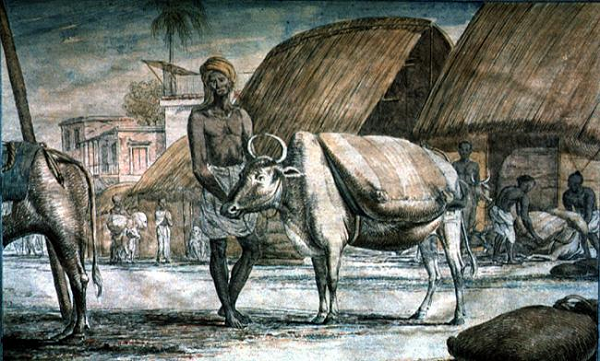Nov 06, 2025
Nov 06, 2025
An Interpretation of Louis Renou’s La Maison Vedique
While there is much evidence that testifies to the construction of houses, palaces and temples from the Gupta period onwards, there is little direct evidence on the art of building and architecture in the pre-Gupta, Vedic period in India. It is in this light that scholarship on Vedic building becomes relevant, and one of the most influential works has been the French scholar Louis Renou’s La Maison Vedique, or the Vedic house.

According to Louis Renou, much of the testimony for what is architecture in the Vedic period comes down to us from the literature of the period, the main texts being the Grihasutras that accompany house and building construction. This literature can afford us valuable insights into how the house was constructed and even the layout or plan itself. While the house is sometimes referred to as a Griha, the more frequent term is Shala, a term that is still in use in modern day Indian languages. Other terminology that has been intermittently used in the Grihasutras is veshman (habitat), sharana (refuge), avaasa (residence), and the generic term vaastu.
According to the Grihasutras, the house is constructed after ritual vastushamana (earth appeasement), and then what is the equivalent of modern site planning is carried out with the bedroom to be surrounded by moving water with good drainage. Similar instructions exist for the kitchen (bhaktasharana), living room (sabha) and other features. The living room, of course, is to be constructed in the south part of the house, where the flowing water meets. The site is shaped either in a rectangle or a circle, though other texts have it as square.
Texts further describe the digging of post-holes in the ground to support the house, a central pillar (or sometimes two) around which the house is oriented, and the principal door, sometimes described as facing east. The rear door (anudvara) on the other hand is to be placed in a concealed position as its inferior position would indicate: this might indicate also that the door is meant to be used by ‘untouchables’ (chandalas). There is also mention of the dvarpatika.
As far as rooms are concerned, there are few references: one text says that rooms should be arranged between the house beams which would suggest regular partitions in the house. There are also allusions to a ceremonial hall called the shala, which is raised on one side and enclosed on all other sides. The roof of the house is in close connection with placing two large crossing beams (vamsha) running from north to south and from east to west. It is upon these beams that the roof is laid, whose gaps are filled with hay and thatch.
The exterior door has an ornamental frontispiece called the rarati, which is generally made of close spaced reeds and attached to the front cross beam mentioned earlier. The function of this beyond ornamental purposes is not clear: but there are some suggestions that it could be to prevent wind entering through the gap between the door and the walls.
The roofing system, perhaps to account for the hot climate, consists of multiple layers of covering, as many as nine (navachaddis), and may be supplemented by an awning to keep out the summer heat and shade the house. The roof is pitched toward the north, or toward the central pillar mentioned earlier.
Other features of the house are less readily identifiable. For example, there are references to bundles of straw that clad the house (palada), while there is also reference to bundles of mats that ‘clothe’ the residence.
In conclusion, Louis Renou’s interpretation of the Vedic texts that refer to house construction in Vedic times confirms our belief that houses were temporary structures made mainly of straw, mat, wood and mud, and that brick (which would have produced lasting structures) was not so common, except as fire altars and other low structures. This confirms our belief of the Vedic people as a mainly pastoral community that moved with their animals to greener pastures and thus constructed no permanent dwellings. However, some interesting questions are raised by this interpretation of the texts: how did the architect or sthapati eventually emerge from this period to go on to construct temples and palaces during the later Gupta period? What was the inspiration for the formal vocabulary of the Vedic house? An answer to the latter can be indicated from Balthazar Solvyn’s etchings of Bengali Hindu village houses from the 1790s, which look and feel very much like the Vedic house as indicated in the Grihashastra. Here too, no permanent material is used, and there is a considerable use of reed and mat in the construction.
While Renou, being a scholar of Sanskrit and ancient India, has done admirable work in translating the texts and even going so far as to look at ‘mantras’ for allusions to building and construction (where, according to Michael Meister, he finds technical terms ‘used as metaphors’), he cannot be faulted for not fully comprehending the very technical process of construction itself, that would surely have involved an organization of the village community into specialized professions such as site workers, mat weavers, construction specialists and so on. When we tie into this picture the figure of the priest who undertakes the ritual of consecrating the Vedic house, we begin to better appreciate the nature of Vedic society itself, full of animism, powerful Gods and a simple, pastoral way of life that needed the philosophical interpretations of Buddhism, Jainism and later Hinduism to develop the complex, metaphysical vocabulary needed for the development of the Hindu temple of the Gupta age and later.
Image: Balthazar Solvyn’s rendering of Bengali thatched houses, c. 1790.
28-Sep-2013
More by : Ashish Nangia

|
The houses in the later Vedic period were made up of |